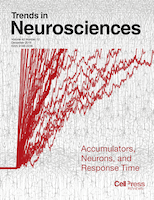
AIMS Neuroscience
metrics 2024
Empowering minds with cutting-edge neuroscience insights.
Introduction
AIMS Neuroscience is an esteemed open-access journal published by the American Institute of Mathematical Sciences (AIMS), dedicated to advancing the field of neuroscience since its inception in 2014. With a robust ISSN of 2373-8006 and an E-ISSN of 2373-7972, this journal aims to provide a platform for innovative research and scholarly discourse that spans the diverse and dynamic landscape of the neuroscience discipline. As of 2023, it holds a respectable Q3 category ranking in the miscellaneous neuroscience field and ranks #65 out of 113 in general neuroscience according to Scopus, positioning it in the 42nd percentile for impact. AIMS Neuroscience encompasses a broad scope of topics, from neurobiology and cognitive neuroscience to computational models and neuroengineering, making it a vital resource for researchers, professionals, and students alike. The journal's commitment to open access ensures that cutting-edge research is freely available, fostering collaboration and knowledge sharing within the global neuroscience community.
Metrics 2024
 -
- 3.10
3.10 2.70
2.70 -
-Metrics History
Rank 2024
IF (Web Of Science)
JCI (Web Of Science)
Quartile History
Similar Journals

Frontiers in Integrative Neuroscience
Elevating global collaboration in neuroscience exploration.Frontiers in Integrative Neuroscience, published by FRONTIERS MEDIA SA, is an esteemed open-access journal dedicated to advancing our understanding of the intricate workings of the nervous system. Since its inception in 2007, this journal has become a key resource for researchers and professionals in the field, covering a wide range of topics including cellular and molecular neuroscience, cognitive neuroscience, and sensory systems. With a reputation bolstered by its open-access model, Frontiers in Integrative Neuroscience aims to promote expedient dissemination of high-quality research, ensuring that all findings are readily accessible to the scientific community and beyond. The journal has achieved a commendable recognition, ranking in the upper tiers of its respective categories according to Scopus, with a Q2 ranking in both cognitive neuroscience and sensory systems, and a Q3 ranking in cellular and molecular neuroscience. Based in Switzerland, it continues to be a pivotal platform for innovative research that shapes our understanding of neural dynamics, encouraging collaboration and knowledge exchange among scholars worldwide.

Brain and Behavior
Advancing Knowledge in Behavioral Neuroscience.Brain and Behavior is a premier open-access journal published by WILEY, dedicated to advancing the field of Behavioral Neuroscience. With its ISSN 2162-3279, the journal has established itself as a vital resource for researchers, professionals, and students alike, fostering the dissemination of cutting-edge research since its inception in 2011. Renowned for its rigorous peer-review process, it enjoys a commendable Q2 ranking within the field, reflecting its impactful contributions and relevance in the scientific community. The journal not only emphasizes innovative studies that bridge behavioral science and neuroscience but also serves as a platform for diverse methodologies and interdisciplinary approaches. Accessible [open access](https://onlinelibrary.wiley.com/journal/21623279), Brain and Behavior invites submissions that explore the neural mechanisms underlying behavior, aiming to engage a global audience eager to expand the boundaries of knowledge in this dynamic field. Positioned in the heart of the United States, at 111 River St, Hoboken, NJ, it is strategically placed to collaborate with leading institutions and researchers worldwide.

TRENDS IN NEUROSCIENCES
Navigating the Evolving Landscape of NeuroscienceTRENDS IN NEUROSCIENCES, published by CELL PRESS, is a leading journal in the field of neuroscience, offering cutting-edge insights and important developments in the rapidly evolving landscape of brain research. With an impressive Impact Factor and ranking in the top quartile (Q1) of the category for Neuroscience (miscellaneous), it is positioned as a vital resource for researchers and professionals seeking to stay abreast of the latest discoveries and trends from 1978 to the present. Specifically ranked #3 out of 113 in General Neuroscience by Scopus, this journal promotes the interdisciplinary exchange of ideas and knowledge, making it an essential platform for students and experienced scholars alike. Although it is not an Open Access journal, its value lies in its rigorous peer-review process and commitment to maintaining the highest standards of academic integrity. By continuing to explore the complexities of neural processes and behavior, TRENDS IN NEUROSCIENCES plays a crucial role in shaping the future of neuroscience research and education.

Behavioral and Brain Functions
Advancing the Science of Mind and BehaviorBehavioral and Brain Functions is a leading Open Access journal published by BMC, dedicated to advancing the field of behavioral neuroscience, cognitive neuroscience, and biological psychiatry since its inception in 2005. This esteemed journal, based in the United Kingdom, has established itself as a vital resource for researchers and professionals, boasting a remarkable influence demonstrated by its Q1 and Q2 rankings across multiple relevant categories. With its commitment to providing unrestricted access to high-quality research, the journal facilitates the dissemination of significant findings in understanding the complex interactions between behavior and brain function. The journal ranks impressively within the Scopus database, positioning itself among the top-tier publications in its categories, making it an essential platform for academic discourse and innovation. As it converges through 2024, Behavioral and Brain Functions continues to play a crucial role in shaping the forefront of neuroscientific inquiry, inviting contributions that challenge our understanding and promote further exploration in these dynamic fields.

HUMAN BRAIN MAPPING
Leading the way in groundbreaking brain research.HUMAN BRAIN MAPPING, published by Wiley, is a premier journal in the field of neuroscience, devoted to comprehensively advancing understanding of brain structure and function through innovative mapping techniques. With an impressive impact factor and ranked in the Q1 category across multiple relevant disciplines—including Anatomy, Neurology, and Radiology—this journal is recognized as a vital resource for researchers and professionals passionate about the complexities of the human brain. Founded in 1993 and continuously publishing groundbreaking research, HUMAN BRAIN MAPPING is essential for those looking to stay at the forefront of developments in anatomical and neurological research. Though it does not currently offer Open Access options, the journal remains committed to disseminating high-quality research that influences clinical practices and academic inquiry. Its esteemed position within Scopus highlights its significance; charting at the top percentiles across various medical and health fields serves as a testament to the critical contributions made by the authors and researchers involved. As it converges toward 2024, HUMAN BRAIN MAPPING continues to be the go-to platform for publishing pivotal insights into the intricacies of brain mapping methodologies and applications.

Frontiers in Aging Neuroscience
Exploring the Neurological Pathways of Aging.Frontiers in Aging Neuroscience, published by FRONTIERS MEDIA SA, is a leading open-access journal dedicated to the field of aging neuroscience, with its ISSN being 1663-4365. Since its inception in 2009, this journal has provided a platform for researchers to disseminate their findings on the neurological aspects of aging, addressing critical issues that impact cognition and overall brain health in the elderly population. With a commendable 2023 impact factor, the journal ranks in the Q2 category in both Aging and Cognitive Neuroscience, positioning it among the top-tier publications in these fields. Notably, it is recognized within Scopus, ranking #32 out of 115 in Neuroscience (Cognitive Neuroscience) and #20 out of 38 in the Aging sector, with corresponding percentiles of 72nd and 48th, respectively. As an open-access journal, it promotes unrestricted access to research findings, fostering collaboration and innovation among the academic community. Researchers, professionals, and students alike can explore cutting-edge studies that contribute to understanding the complexities of neurological aging and work towards improving cognitive health in an aging society.

IBRO Neuroscience Reports
Bridging gaps in neuroscience research and understanding.IBRO Neuroscience Reports, published by Elsevier, is a pivotal open-access journal dedicated to advancing the field of neuroscience. With its ISSN 2667-2421, the journal serves as a vital platform for researchers, professionals, and students alike, showcasing innovative research and interdisciplinary studies that span various aspects of neuroscience. Since its inception in 2021, and with a planned convergence through 2024, the journal has quickly established itself within the academic community, currently holding a Q3 category ranking in the field of Neuroscience (miscellaneous) and a Scopus rank of #77 among 113 in General Neuroscience, reflecting its ongoing commitment to quality and relevance. The accessibility of research articles ensures that critical findings are widely disseminated, fostering collaboration and dialogue within the neuroscientific community. Researchers and professionals are encouraged to contribute to this dynamic journal, reinforcing its role in shaping the future of neuroscience research.

Brain Communications
Advancing Neuroscience Through Open DialogueBrain Communications is an esteemed, open-access academic journal published by Oxford University Press since 2019, focusing on the dynamic field of neuroscience. With a dedicated ISSN and an E-ISSN of 2632-1297, this journal aims to address the intricate relationships between brain functions, psychiatric disorders, and neurobiological mechanisms. The journal stands out in the academic realm, holding a prestigious Q1 ranking across several categories, including Biological Psychiatry, Cellular and Molecular Neuroscience, Neurology, and Psychiatry and Mental Health for 2023. Notably, it has also secured impressive Scopus ranks in various neuroscience and psychiatry fields, evidencing its commitment to high-quality research. With an impact factor reflective of its growing influence, Brain Communications provides accessible research findings to professionals, researchers, and students alike, fostering a deeper understanding of complex neurological phenomena. This innovative journal is pivotal for anyone involved in advancing knowledge in neuroscience and mental health.

Neuroscience Insights
Exploring the Depths of Neural ScienceNeuroscience Insights, published by SAGE Publications Ltd, is an esteemed open-access journal dedicated to advancing the field of neuroscience. Initiated in 2019, this journal provides a platform for high-quality research encompassing a broad spectrum of topics within neuroscience, positioning itself prominently in the academic community with a 2023 ranking in the second quartile (Q2) of neuroscience journals. With an impressive Scopus rank of #42 out of 113, Neuroscience Insights showcases significant contributions that facilitate understanding and innovations in general neuroscience. As an open-access journal, it ensures that groundbreaking research is widely disseminated, promoting collaboration and accessibility for researchers, professionals, and students worldwide. With an ongoing commitment to foster interdisciplinary dialogue within the neuroscience arena, Neuroscience Insights serves as a crucial resource for those looking to stay at the forefront of neuroscientific advancements.

REVIEWS IN THE NEUROSCIENCES
Unlocking the Complexities of the BrainREVIEWS IN THE NEUROSCIENCES is a prestigious peer-reviewed journal published by Walter de Gruyter GmbH, specializing in the multidisciplinary field of neuroscience. With a robust history dating back to 1986 and a converged publishing timeline through to 2024, this journal serves as an essential platform for researchers and professionals who seek to explore the complexities of neuroscience in a rapidly evolving landscape. The journal is currently indexed in Scopus, boasting an impressive rank of #19 out of 113 in the General Neuroscience category, positioning it in the 83rd percentile of academic journals. It is classified within the Q2 quartile, reflecting its significant impact and contribution to the field. While not an Open Access publication, the journal offers extensive access options for institutions and individuals eager to stay informed about the latest findings and advancements in neuroscience. REVIEWS IN THE NEUROSCIENCES aims to provide comprehensive reviews covering a wide range of topics in neuroscience, fostering scholarly discussion and advancing knowledge, making it an invaluable resource for researchers, academics, and students alike.